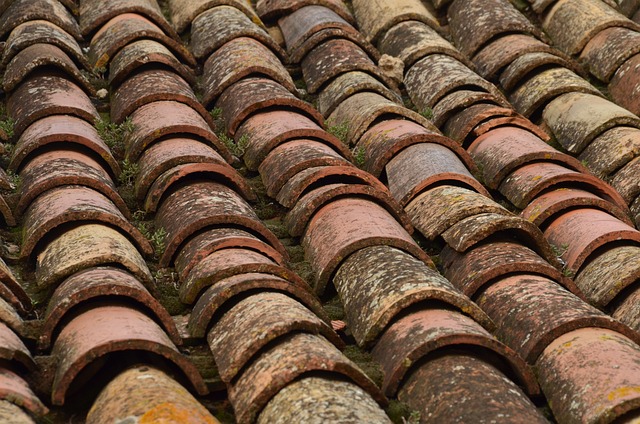Infrared roof leak detection is a revolutionary non-invasive technology in insurance claims management, utilizing thermal imaging to identify leaks accurately and quickly. It provides detailed evidence through high-resolution images and measurements, streamlining investigations and claims processing for insurers. Effective communication, clear language, prompt reporting, regular updates, and standardized forms are crucial for successful claim settlements. This advanced method reduces site inspections and associated costs, with proper training and digital integration ensuring accuracy and reliability in leak detection.
Navigating the insurance claims process can be complex, especially when it comes to documentation. This comprehensive guide breaks down the intricacies of working with insurance companies on claim documentation. From understanding the foundational process to exploring innovative tools like infrared roof leak detection, we provide insights on effective communication and best practices for streamlining paperwork. Learn how to overcome common challenges and ensure a smoother claims journey in today’s digital era.
Understanding Insurance Claim Documentation Process
When working with insurance companies for claim documentation, understanding the process is paramount. The journey begins with identifying and documenting damage, which often involves cutting-edge technologies like infrared roof leak detection. This non-invasive method helps in pinpointing water intrusions that may not be immediately apparent to the naked eye. Once leaks or damages are located, detailed records are made, including high-resolution images and precise measurements.
These documents serve as crucial evidence during the claims assessment phase. Insurance adjusters review this information to determine the extent of damage and calculate compensation accurately. Efficient documentation ensures a smoother claims process, reducing potential delays or disputes. Therefore, working closely with professionals who employ technologies like infrared roof leak detection is essential for a successful claim resolution.
The Role of Infrared Roof Leak Detection in Claims
Infrared roof leak detection has emerged as a game-changer in the realm of insurance claims, particularly for property damage assessments. This cutting-edge technology utilizes thermal imaging to identify leaks and water intrusion within roofs, offering a non-invasive and efficient solution compared to traditional methods. By capturing and analyzing temperature variations, infrared cameras can pinpoint exact locations of roof failures or vulnerabilities before they escalate into costly repairs.
For insurance companies, integrating infrared roof leak detection into their claim documentation processes streamlines investigations, enhances accuracy, and potentially reduces settlement times. This technology provides tangible evidence, enabling underwriters to make informed decisions based on objective data. Moreover, it minimizes the risk of disputes by offering a clear, visual representation of the damage, thereby fostering trust between insurers, policyholders, and contractors during the claim settlement process.
Effective Communication with Insurance Companies
Effective communication is key when working with insurance companies for claim documentation, especially when addressing complex issues like infrared roof leak detection. This advanced technology helps identify subtle leaks that may be invisible to the naked eye, providing crucial data for accurate assessments and faster claims processing. However, successful collaboration requires clear and concise interactions between all parties involved.
Insurance adjusters and claimants should utilize precise language to describe findings, ensuring every detail is documented accurately. Regular updates, prompt reporting of repairs, and active listening during discussions help maintain a smooth process. Effective communication fosters mutual understanding, reduces misunderstandings, and ultimately facilitates more efficient claim settlements.
Common Challenges and How to Overcome Them
Working with insurance companies on claim documentation often involves navigating complex processes, especially when dealing with intricate issues like infrared roof leak detection. Common challenges include miscommunication, incomplete or inaccurate data, and delays in assessment, all of which can prolong the claims process.
To overcome these hurdles, clear and consistent communication is key. Using standardized forms and clearly documenting every step ensures that all parties involved have the same understanding. Incorporating advanced technologies like infrared roof leak detection can significantly enhance accuracy and speed up assessments, reducing potential disputes. Regular training for adjusters and agents on best practices and new tools can also streamline the process, leading to more efficient claim resolutions.
Best Practices for Streamlining Claim Documentation
When working with insurance companies on claim documentation, adopting best practices can significantly streamline processes and enhance efficiency. One innovative tool that facilitates this is infrared roof leak detection. By employing thermal imaging technology, insurers can quickly identify the source of leaks, reducing the time spent on site inspections and gathering evidence. This not only expedites the claims process but also minimizes costs associated with unnecessary repairs or further damage.
To maximize the benefits of infrared roof leak detection, ensure thorough training for all personnel involved. Standardized protocols for data collection and documentation must be established to guarantee consistency. Integrating this technology into existing digital systems can create a seamless workflow, enabling real-time sharing of information between adjusters, technicians, and underwriters. Regular updates and maintenance of the infrared equipment are also crucial to maintain accuracy and reliability.
Infrared roof leak detection has emerged as a game-changer in streamlining insurance claim documentation, significantly enhancing efficiency and accuracy. By understanding the intricacies of the claim process, leveraging advanced technology like infrared scans for leaks, and fostering open communication with insurers, professionals can overcome common challenges and implement best practices. These strategies ensure a smoother, more effective claims handling process, ultimately benefiting both insurance providers and policyholders.
